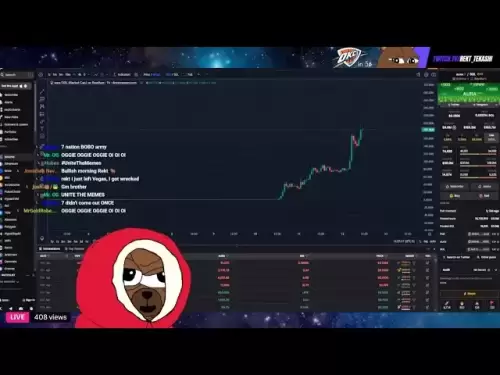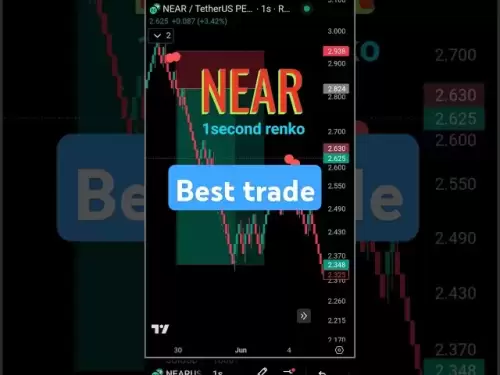-
 Bitcoin
Bitcoin $104,616.1446
-2.76% -
 Ethereum
Ethereum $2,510.9913
-8.83% -
 Tether USDt
Tether USDt $1.0005
0.05% -
 XRP
XRP $2.1317
-5.07% -
 BNB
BNB $656.4656
-1.70% -
 Solana
Solana $144.6534
-9.21% -
 USDC
USDC $0.9996
-0.02% -
 Dogecoin
Dogecoin $0.1739
-8.42% -
 TRON
TRON $0.2735
-0.45% -
 Cardano
Cardano $0.6320
-7.74% -
 Hyperliquid
Hyperliquid $39.5688
-4.43% -
 Sui
Sui $3.0100
-9.20% -
 Chainlink
Chainlink $13.1770
-8.59% -
 UNUS SED LEO
UNUS SED LEO $9.0336
1.77% -
 Bitcoin Cash
Bitcoin Cash $414.8548
-3.89% -
 Avalanche
Avalanche $19.1840
-8.67% -
 Stellar
Stellar $0.2585
-6.43% -
 Toncoin
Toncoin $2.9760
-7.99% -
 Shiba Inu
Shiba Inu $0.0...01171
-8.33% -
 Hedera
Hedera $0.1545
-8.47% -
 Litecoin
Litecoin $83.4893
-7.01% -
 Polkadot
Polkadot $3.7997
-6.20% -
 Ethena USDe
Ethena USDe $1.0003
-0.02% -
 Monero
Monero $317.3848
-3.44% -
 Dai
Dai $0.9998
0.01% -
 Bitget Token
Bitget Token $4.5353
-3.99% -
 Uniswap
Uniswap $7.3397
-7.77% -
 Pepe
Pepe $0.0...01073
-13.04% -
 Aave
Aave $281.1476
-4.67% -
 Pi
Pi $0.5509
-12.82%
The Bollinger band opening expands: a key node for trend acceleration?
Bollinger Band expansion signals rising volatility, often marking trend acceleration or momentum shifts in crypto markets.
Jun 12, 2025 at 03:07 pm
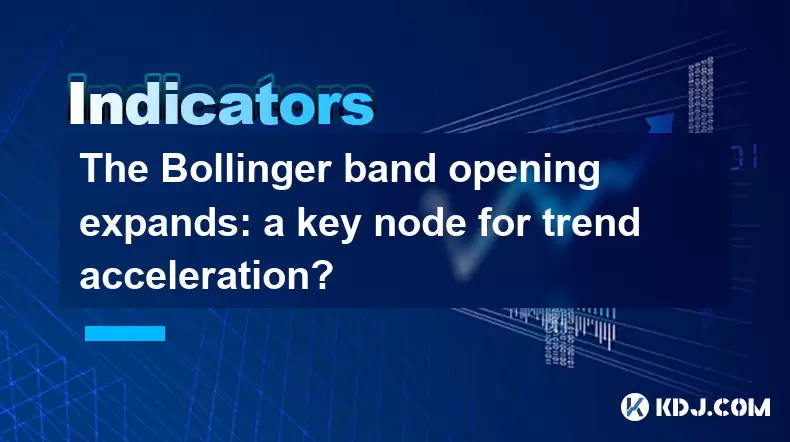
Understanding the Bollinger Band Mechanism
The Bollinger Bands are a widely used technical analysis tool in cryptocurrency trading. They consist of three lines: a simple moving average (SMA) and two standard deviation bands above and below it. These bands dynamically adjust to price volatility, making them especially useful in the highly volatile crypto market.
When prices are relatively stable, the bands contract, indicating low volatility. Conversely, when there is a significant price movement—either up or down—the bands expand outward. This expansion often signals that a strong trend may be beginning or accelerating.
Key Insight: The distance between the upper and lower bands reflects the level of market volatility.
Traders should pay attention not only to price action but also to how far apart the bands are from each other. A widening gap can serve as an early signal for potential momentum shifts.
What Does It Mean When the Bollinger Band Opening Expands?
An expanding Bollinger Band opening typically indicates increasing volatility. In the context of cryptocurrencies like Bitcoin or Ethereum, this can occur during major news events, regulatory updates, or sudden market sentiment changes.
This expansion suggests that price swings are becoming more extreme. For traders, this could mean the start of a new trend or the continuation of an existing one. However, it's important to remember that volatility alone doesn't indicate direction—it simply shows the intensity of price movement.
- Increased Volatility: Larger band separation means stronger price fluctuations.
- Potential Trend Acceleration: Expansion often coincides with a breakout or breakdown in price.
- Market Sentiment Shifts: Sudden moves usually reflect changing trader psychology.
Identifying Key Nodes Using Bollinger Band Expansion
In technical analysis, a "key node" refers to a critical point where the price may reverse, consolidate, or accelerate. An expanding Bollinger Band opening can act as such a key node when combined with other indicators like volume spikes or candlestick patterns.
For instance, if the bands begin to widen just after a period of contraction, and the price breaks out of a consolidation zone, this can confirm the start of a powerful trend.
- Volume Confirmation: Look for increased volume alongside band expansion to validate strength.
- Price Breakout: Confirm whether the price has moved beyond recent resistance or support levels.
- Momentum Indicators: Use RSI or MACD to check for overbought or oversold conditions.
It’s crucial to avoid entering trades based solely on Bollinger Band expansion without confirming signals from other tools.
How to Trade During a Bollinger Band Expansion
Trading during a Bollinger Band expansion requires careful strategy execution. Here's a step-by-step guide:
- Monitor Band Width: Watch for signs of contraction followed by sudden expansion.
- Check Price Action: Determine whether the expansion occurs near a support/resistance level or after a breakout.
- Use Volume Analysis: Ensure that the expansion is supported by rising volume to confirm institutional or whale activity.
- Set Entry Points: Consider entering after a retest of the breakout level or upon confirmation of a new trend channel.
- Place Stop Loss: Set stop losses just beyond the opposite band or previous swing high/low to manage risk effectively.
Each of these steps plays a vital role in ensuring that you're not merely reacting to volatility but strategically positioning yourself within a developing trend.
Common Misinterpretations of Bollinger Band Expansion
Many novice traders fall into the trap of assuming that Bollinger Band expansion always leads to a profitable trade. However, this isn't always the case. Here are some common misinterpretations:
- Assuming Direction: Expansion doesn’t tell you which way the price will go—only that it's likely to move strongly.
- Ignoring Context: Failing to assess the broader market environment can lead to false signals.
- Overtrading: Acting impulsively on every expansion can result in multiple losing trades.
To avoid these pitfalls, always combine Bollinger Bands with other analytical tools and maintain strict risk management protocols.
Frequently Asked Questions
Q1: Can Bollinger Band expansion be used across all timeframes?
Yes, the Bollinger Band indicator works on any timeframe—from 1-minute charts to weekly ones. However, higher timeframes tend to provide more reliable signals due to reduced noise and greater volume participation.
Q2: Is Bollinger Band expansion a lagging indicator?
While the Bollinger Bands are based on moving averages—which are lagging—they react dynamically to price changes. Therefore, they offer both reactive and predictive insights depending on how they’re interpreted.
Q3: Should I rely solely on Bollinger Band expansion for trading decisions?
No single indicator should be used in isolation. Always combine Bollinger Bands with complementary tools like volume, candlestick patterns, or trendlines to increase accuracy.
Q4: How does Bollinger Band expansion differ from other volatility indicators?
Unlike fixed-range indicators like ATR, Bollinger Bands adapt to current market conditions. Their dynamic nature allows them to reflect real-time volatility shifts, which is particularly valuable in fast-moving crypto markets.
Disclaimer:info@kdj.com
The information provided is not trading advice. kdj.com does not assume any responsibility for any investments made based on the information provided in this article. Cryptocurrencies are highly volatile and it is highly recommended that you invest with caution after thorough research!
If you believe that the content used on this website infringes your copyright, please contact us immediately (info@kdj.com) and we will delete it promptly.
- Bitcoin Solaris (BTC-S) Emerges as the Technological Revolution Revolutionizing the Crypto Landscape
- 2025-06-13 18:10:12
- Bank of America's stablecoin ambitions are an important shift in how major banks are approaching digital assets.
- 2025-06-13 18:10:12
- One-Third of All Circulating Bitcoin Is Now Held by Institutional Investors
- 2025-06-13 18:05:13
- Why BlockDAG Leaves ADA and PEPE Behind
- 2025-06-13 18:05:13
- Tether Investments Buys Stake in Gold Royalty Firm to Deepen Exposure to Durable Assets
- 2025-06-13 18:00:19
- Tether (USDT) Invests in Gold-Backed Royalties Company Elemental Altus, Acquiring a 31.9% Stake
- 2025-06-13 18:00:19
Related knowledge
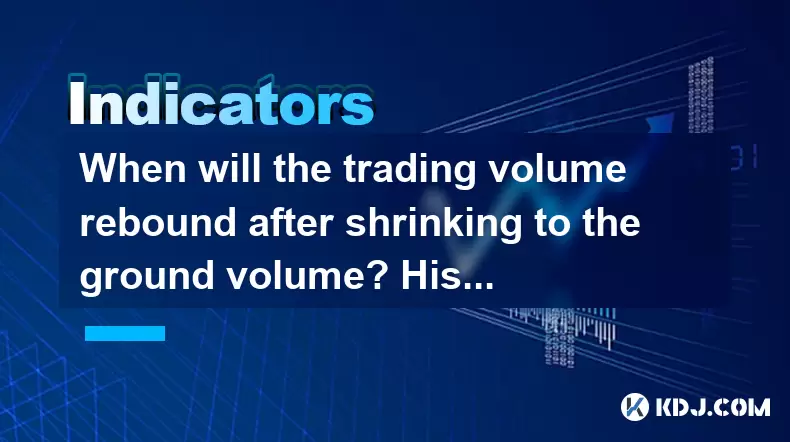
When will the trading volume rebound after shrinking to the ground volume? Historical percentile comparison method
Jun 13,2025 at 03:36pm
Understanding the Ground Volume Concept in Cryptocurrency MarketsIn cryptocurrency trading, 'ground volume' refers to a period when the trading volume of a particular asset or market drops significantly, often reaching multi-month or even multi-year lows. This phenomenon typically signals a lack of interest from traders and investors, suggesting that th...
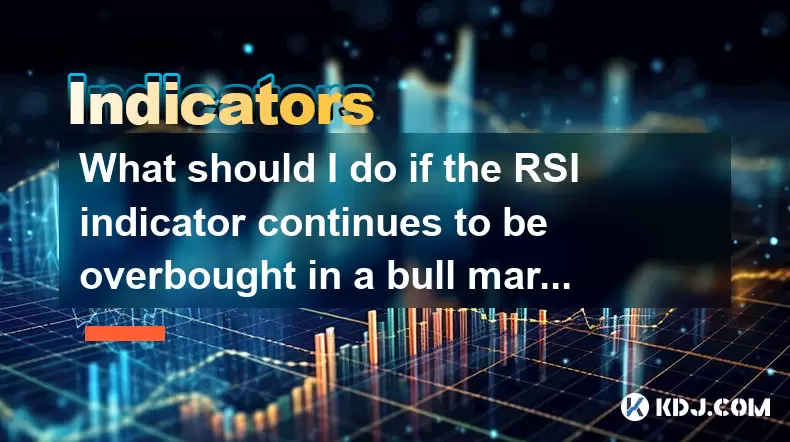
What should I do if the RSI indicator continues to be overbought in a bull market? How to adjust the overbought zone threshold?
Jun 13,2025 at 05:57pm
Understanding the RSI Indicator in a Bull MarketThe Relative Strength Index (RSI) is a momentum oscillator commonly used by traders to assess overbought or oversold conditions of an asset. In a bull market, especially within the cryptocurrency space, prices can remain elevated for extended periods. This often leads to the RSI indicator staying in the ov...

How to read the CR indicator's four lines that diverge and then converge? Key pressure point identification skills
Jun 13,2025 at 12:21pm
Understanding the CR Indicator in Cryptocurrency TradingThe CR indicator, also known as the Chikin Ratio or Chaikin Oscillator, is a technical analysis tool widely used in cryptocurrency trading to gauge momentum and potential price reversals. It combines volume and price data to provide traders with insights into market strength and weakness. The indic...
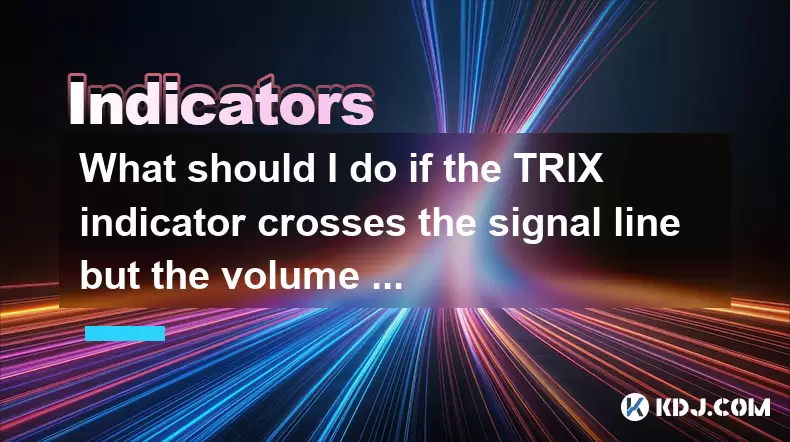
What should I do if the TRIX indicator crosses the signal line but the volume is insufficient?
Jun 13,2025 at 05:49pm
Understanding the TRIX Indicator and Its Role in Cryptocurrency TradingThe TRIX (Triple Exponential Average) indicator is a momentum oscillator commonly used by cryptocurrency traders to identify potential trend reversals or confirm existing trends. It filters out market noise by applying triple exponential smoothing to price data, which makes it partic...

What should I do if the ASI vibration rise and fall indicator is not synchronized with the price? When should I believe in the indicator?
Jun 13,2025 at 12:29pm
Understanding the ASI Vibration Rise and Fall IndicatorThe Accumulation Swing Index (ASI) is a technical indicator developed by Welles Wilder to help traders identify potential reversals and confirm trends in price movements. The vibration rise and fall aspect of the ASI refers to how the line oscillates above and below its zero line, indicating shifts ...
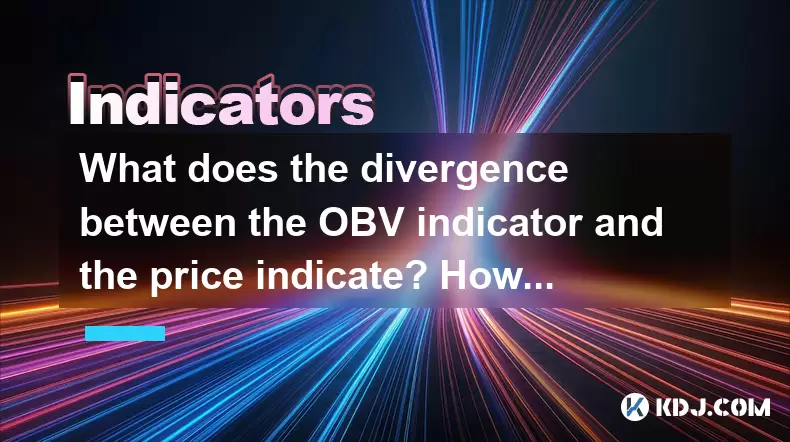
What does the divergence between the OBV indicator and the price indicate? How to use it to capture the main trend?
Jun 13,2025 at 05:35pm
Understanding the OBV Indicator and Its SignificanceThe On-Balance Volume (OBV) indicator is a momentum oscillator that uses volume flow to predict changes in stock or cryptocurrency prices. It operates on the principle that volume precedes price movement, meaning that significant shifts in trading volume can signal potential trend reversals or continua...

When will the trading volume rebound after shrinking to the ground volume? Historical percentile comparison method
Jun 13,2025 at 03:36pm
Understanding the Ground Volume Concept in Cryptocurrency MarketsIn cryptocurrency trading, 'ground volume' refers to a period when the trading volume of a particular asset or market drops significantly, often reaching multi-month or even multi-year lows. This phenomenon typically signals a lack of interest from traders and investors, suggesting that th...

What should I do if the RSI indicator continues to be overbought in a bull market? How to adjust the overbought zone threshold?
Jun 13,2025 at 05:57pm
Understanding the RSI Indicator in a Bull MarketThe Relative Strength Index (RSI) is a momentum oscillator commonly used by traders to assess overbought or oversold conditions of an asset. In a bull market, especially within the cryptocurrency space, prices can remain elevated for extended periods. This often leads to the RSI indicator staying in the ov...

How to read the CR indicator's four lines that diverge and then converge? Key pressure point identification skills
Jun 13,2025 at 12:21pm
Understanding the CR Indicator in Cryptocurrency TradingThe CR indicator, also known as the Chikin Ratio or Chaikin Oscillator, is a technical analysis tool widely used in cryptocurrency trading to gauge momentum and potential price reversals. It combines volume and price data to provide traders with insights into market strength and weakness. The indic...

What should I do if the TRIX indicator crosses the signal line but the volume is insufficient?
Jun 13,2025 at 05:49pm
Understanding the TRIX Indicator and Its Role in Cryptocurrency TradingThe TRIX (Triple Exponential Average) indicator is a momentum oscillator commonly used by cryptocurrency traders to identify potential trend reversals or confirm existing trends. It filters out market noise by applying triple exponential smoothing to price data, which makes it partic...

What should I do if the ASI vibration rise and fall indicator is not synchronized with the price? When should I believe in the indicator?
Jun 13,2025 at 12:29pm
Understanding the ASI Vibration Rise and Fall IndicatorThe Accumulation Swing Index (ASI) is a technical indicator developed by Welles Wilder to help traders identify potential reversals and confirm trends in price movements. The vibration rise and fall aspect of the ASI refers to how the line oscillates above and below its zero line, indicating shifts ...

What does the divergence between the OBV indicator and the price indicate? How to use it to capture the main trend?
Jun 13,2025 at 05:35pm
Understanding the OBV Indicator and Its SignificanceThe On-Balance Volume (OBV) indicator is a momentum oscillator that uses volume flow to predict changes in stock or cryptocurrency prices. It operates on the principle that volume precedes price movement, meaning that significant shifts in trading volume can signal potential trend reversals or continua...
See all articles





















